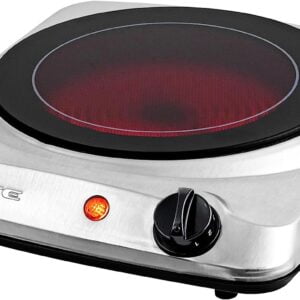Indoor Stoves
No Results Found
The page you requested could not be found. Try refining your search, or use the navigation above to locate the post.
The Evolution and Advantages of Indoor Stoves: Cooking Efficiency in Your Kitchen
Introduction:
Indoor stoves, an indispensable kitchen appliance, have revolutionized the art of cooking, providing homeowners with an efficient and convenient way to prepare meals. From traditional gas stoves to modern induction cooktops, these appliances have come a long way, constantly evolving to meet the needs of modern households. In this article, we will explore the history, types, and advantages of indoor stoves, shedding light on how they have transformed the culinary landscape.
I. The Evolution of Indoor Stoves
The concept of indoor cooking dates back thousands of years, with ancient civilizations using primitive methods such as open fires and clay stoves. The invention of the cast iron stove in the 18th century marked a significant milestone in the evolution of indoor cooking. These stoves provided a more efficient way to control heat and cook food evenly, but they were still reliant on solid fuels like wood or coal.
The 19th century saw the introduction of the first gas stoves, which replaced solid fuels with cleaner and more controllable gas burners. This innovation made cooking easier and more accessible for households, but gas stoves had their limitations, such as uneven heat distribution and difficulty in adjusting heat levels precisely.
The 20th century witnessed a surge in technological advancements, leading to the introduction of electric stoves. These stoves utilized electric coils to generate heat and featured better heat control than gas stoves. Electric stoves became popular due to their ease of use, affordability, and widespread availability.
II. Types of Indoor Stoves
A. Gas Stoves
Gas stoves continue to be a popular choice in many households due to their responsive heat control and reliability. They use natural gas or liquefied petroleum gas (LPG) as a fuel source and feature visible flames that allow users to gauge the heat intensity. Gas stoves offer instant heat and are ideal for tasks that require precise temperature adjustments, making them a favorite among professional chefs.
B. Electric Stoves
Electric stoves come in two primary variations: coil stoves and smooth-top stoves. Coil stoves have traditional coiled heating elements, while smooth-top stoves have a glass-ceramic surface for a sleek appearance and easy cleaning. Electric stoves are generally more affordable than gas stoves and are widely used in households where gas connections are not available or practical.
C. Induction Stoves
Induction stoves represent the latest innovation in indoor cooking technology. They use electromagnetic fields to directly heat compatible magnetic cookware, offering rapid and efficient cooking. Unlike gas and electric stoves, induction stoves do not produce an open flame and remain cool to the touch, ensuring safety in the kitchen. Induction cooking also reduces energy wastage as it heats only the cookware, not the surrounding air.
D. Dual Fuel Ranges
Dual fuel ranges combine the benefits of gas cooktops with electric ovens. The gas burners provide precise and instant heat control, while the electric oven offers even and consistent baking results. Dual fuel ranges are a popular choice for cooking enthusiasts who seek the best of both worlds.
E. Modular Cooktops
Modular cooktops are a versatile option that allows users to customize their cooking space according to their preferences. These cooktops offer various combinations of gas, electric, and induction burners, giving users the freedom to arrange the cooking elements to suit their unique cooking styles.
III. Advantages of Indoor Stoves
Efficiency and Time Savings: Indoor stoves provide quick and efficient heat, reducing cooking times and allowing for faster meal preparation. Induction stoves, in particular, offer unparalleled speed, making them a valuable asset for busy households.
Precision and Control: Gas and induction stoves offer precise temperature control, allowing for delicate tasks such as simmering and melting, as well as high-heat cooking for searing and stir-frying. This level of control empowers cooks to achieve their desired culinary outcomes with ease.
Safety: Induction stoves stand out in terms of safety, as they don’t generate a visible flame and only heat the cookware, minimizing the risk of burns and accidental fires. Additionally, many modern stoves come equipped with safety features like automatic shut-offs and child locks to enhance kitchen safety further.
Easy Cleaning: Smooth-top electric stoves and induction cooktops have a flat, easy-to-clean surface, making post-cooking cleanup a breeze. There are no grates or burners to dismantle and scrub, simplifying the maintenance process.
Aesthetic Appeal: Modern stoves are designed with aesthetics in mind, enhancing the overall look of the kitchen. Sleek designs and clean lines contribute to a more contemporary and visually appealing culinary space.
Conclusion
Indoor stoves have significantly transformed the way we cook, offering convenience, efficiency, and safety in our kitchens. From traditional gas stoves to cutting-edge induction cooktops, these appliances have undergone remarkable changes over the years, continually improving to meet the demands of modern living. Whether you’re a professional chef or a home cook, there is an indoor stove available to suit your culinary needs, making the cooking experience enjoyable and satisfying.


